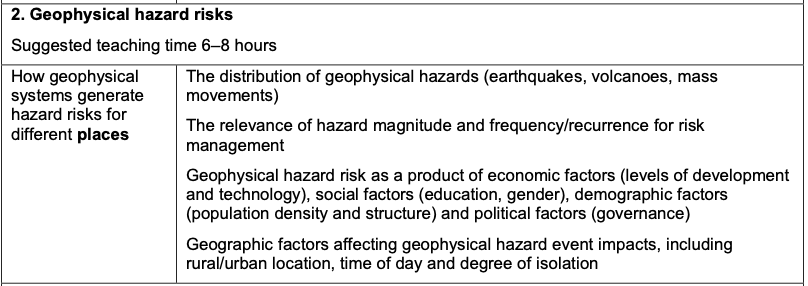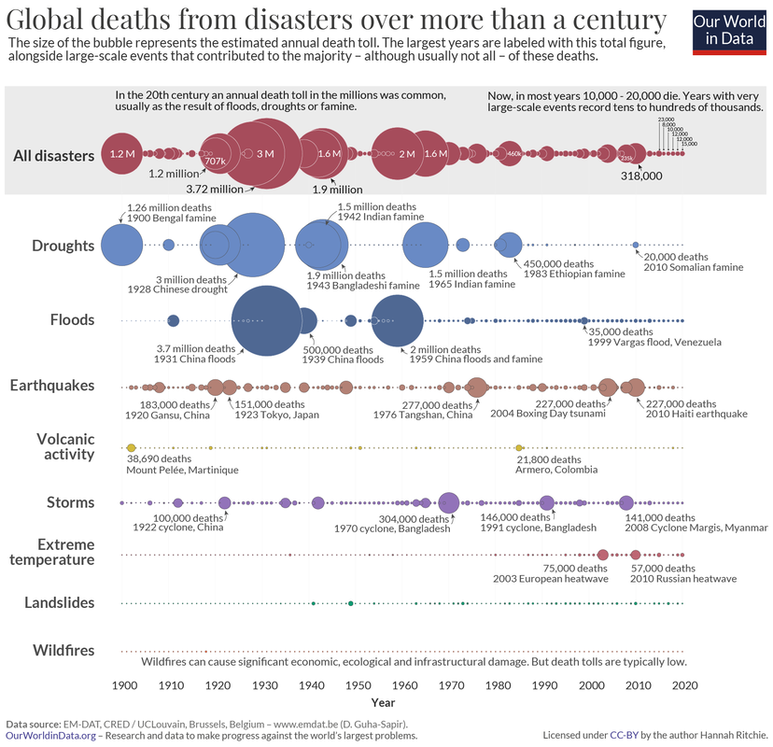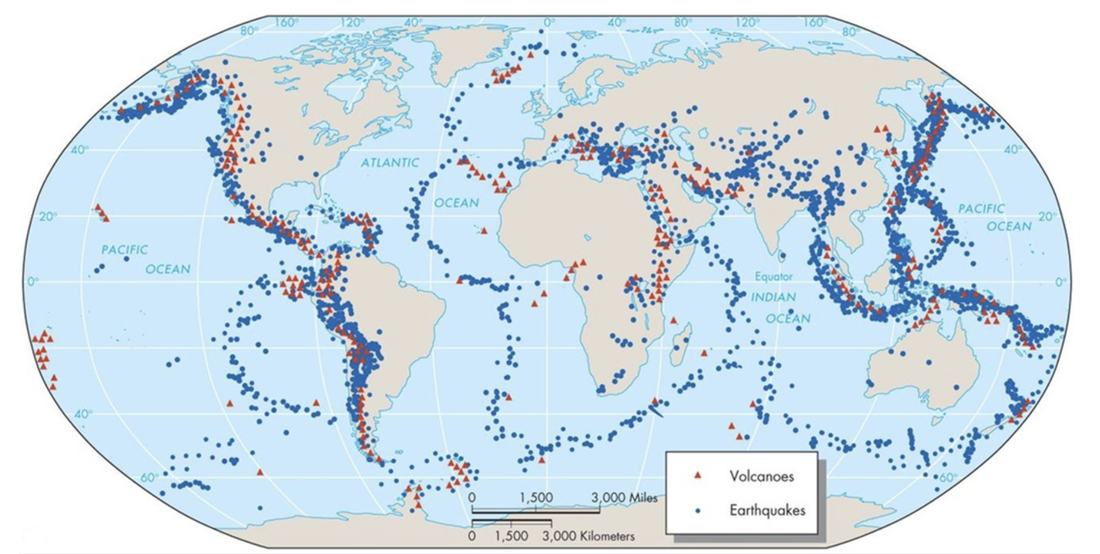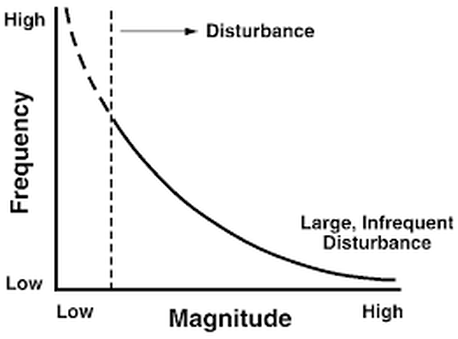2. Geophysical Hazard Risks
The Distribution of Geophysical Hazards (earthquakes, volcanoes, mass movements)
|
|
|
|
|
Map: A3 blank map outline
Interactive Map: World map of volcanoes types
Maps: The world's major earthquake zones
Worksheet: Distribution of Geophysical hazards
Visuals: Our World in Data Natural Hazards
Interactive Map: World map of volcanoes types
Maps: The world's major earthquake zones
Worksheet: Distribution of Geophysical hazards
Visuals: Our World in Data Natural Hazards
The relevance of hazard magnitude and frequency/recurrence for risk management
|
|
|
|



